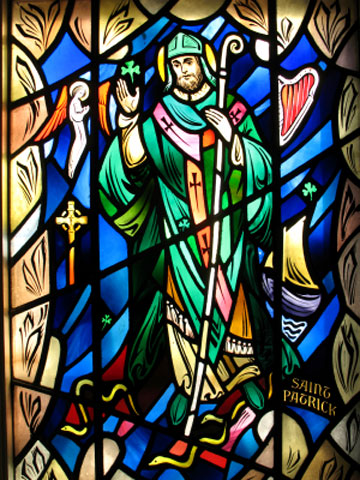This is an excellent occasion to ponder the Celtic Christian tradition which has its roots with an escaped Welsh slave who returned to the land where he had been held in order to share the good news of Christ. As I have shared other years, Patrick and his earliest followers did a fine job of adapting the Christian message to be appealing to the pagan druids who already viewed the number three as sacred.
While the Roman empire was collapsing and the church of the rest of Europe was becoming more hierarchical, Celtic Christianity took an egalitarian turn which included women. Some feel that Brigid was a bishop of the Celtic church, which as recent events in Rome have reminded us still hasn't got any traction in the Catholic tradition.
The Celts were more earth-honouring in worship and practice and there are many lovely prayers which celebrate the beauty of creation and the simple tasks of everyday farm life. There are many legends of the Celtic saints and their relationship with creatures of the wild; otters and herons and salmon. They have been described as Green Martyrs for their willingness to live austere lives as hermits in wilderness settings.
For a while in the early 90's we were in love with all things Celtic, and I led a number of study groups on Celtic faith. I have a Celtic cross tatooed on my forearm, with the traditional cross overlaid with the circle, symbolizing the Son and the sun, or earth. Then the trend seemed to pass, which is the way of our culture.
Begorrah, by God, we need to revive it, and all it stands for, it seems to me.
Any thoughts about this day? Have you explored the Celtic Christian tradition?


1 comment:
Thanks for the history lesson! (And I always thought that tattoo was cool, for the record.)
Post a Comment